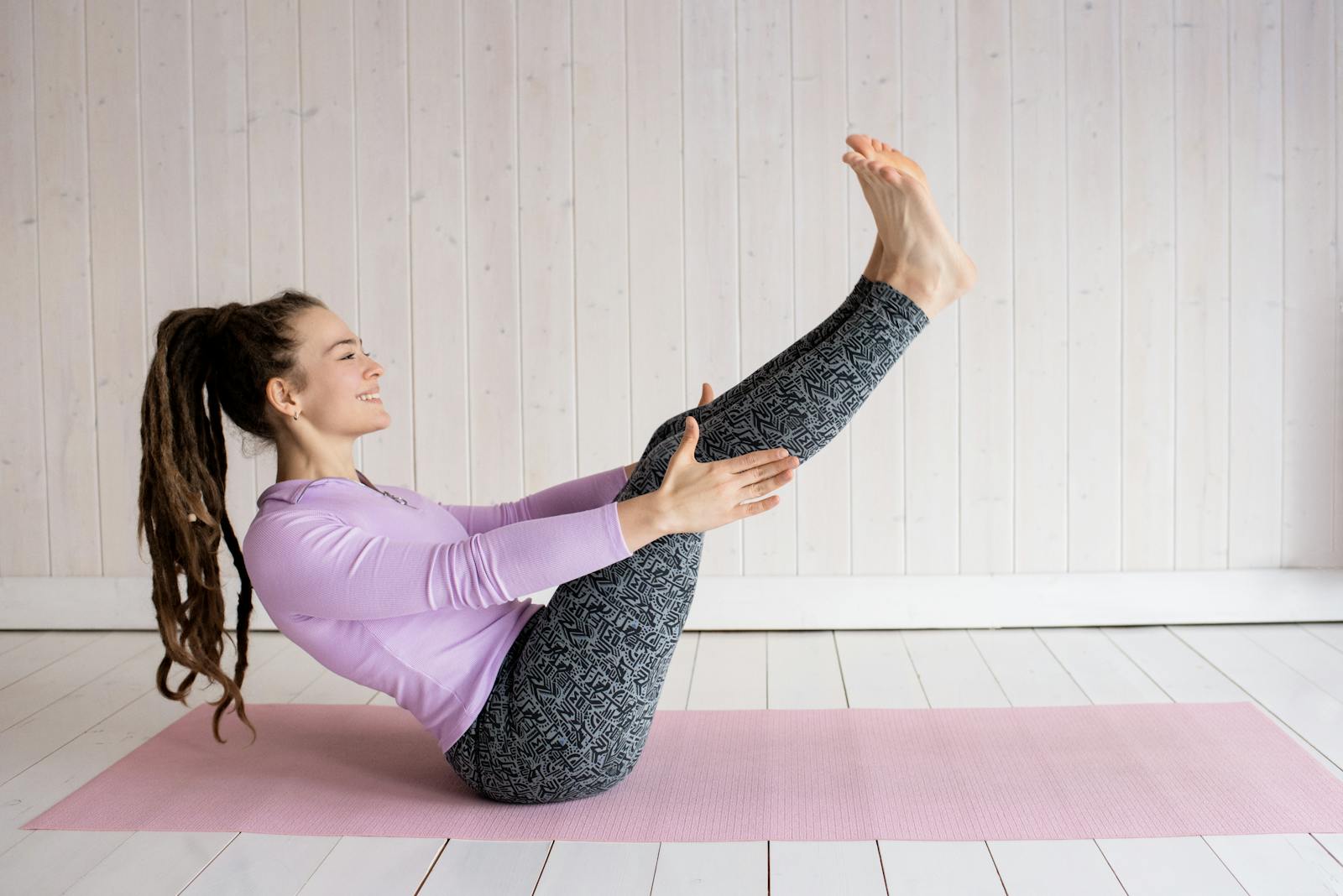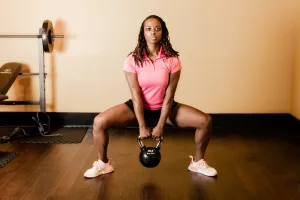Building a strong core is fundamental to physical fitness, as it plays a central role in virtually every movement the body makes. A well-developed core helps support proper posture, enhances balance and stability, and improves performance in sports and daily activities. When most people think of core strength, they think of abdominal muscles, but the core encompasses a network of muscles that includes the abdominals, obliques, lower back, glutes, and even the hip flexors. Engaging in sports and exercises that target these muscle groups will not only strengthen your core but also contribute to overall health, injury prevention, and functional movement. Here, we’ll explore 14 of the best sports and exercises that can help you build a strong, stable core.
1. Pilates
Pilates is a highly effective workout for building core strength. This exercise method focuses on controlled movements that engage the core, particularly the deep abdominal muscles, lower back, and pelvic floor. Exercises like the Hundred, Roll-Up, and Leg Circles are foundational Pilates movements that target the core while improving flexibility and body awareness.
Pilates also emphasizes correct alignment, breathing, and control, all of which contribute to a stronger, more functional core. Practicing Pilates regularly can improve core stability and enhance balance and posture, making it a popular choice for athletes and fitness enthusiasts alike.
2. Yoga
Yoga incorporates a series of poses that require balance, strength, and flexibility, all of which engage the core. Certain poses, like Plank, Boat Pose, and Warrior III, require core stabilization to maintain proper form. Yoga’s emphasis on breath control and mindfulness also helps practitioners become more aware of their body, enhancing their ability to engage their core effectively.
Regular yoga practice strengthens not only the core but also the entire body, improving overall muscle tone and endurance. In addition, yoga can improve flexibility, which reduces tension in the body and helps prevent injuries.
3. Boxing
Boxing is an intense sport that demands core strength and stability to deliver powerful punches and maintain balance. The rotational movements involved in punching activate the obliques and other core muscles, while the constant footwork and dodging engage the entire core to stabilize the body.
Core exercises like medicine ball twists and standing rotational punches are commonly used in boxing training to develop core power and agility. In addition, the high intensity of boxing provides a cardiovascular workout that complements core training, making it a full-body conditioning workout.
4. Rock Climbing
Rock climbing is a challenging sport that requires core stability and strength to support the body while scaling walls. Climbers must use their core to control movements, stabilize their body, and hold positions while reaching for holds. The movements involved in rock climbing target multiple core muscles, including the abdominals, obliques, and lower back.
Rock climbing also improves grip strength, balance, and mental focus, all of which contribute to building a stronger and more resilient core. Regular climbing sessions help increase endurance, making it easier to engage the core effectively in other activities.
5. Swimming
Swimming is an excellent low-impact exercise that enhances core stability and endurance. Each stroke requires a strong core to keep the body aligned and streamline movement through the water. The freestyle, backstroke, and butterfly strokes all engage the core, helping to build strength and maintain proper form.
The water’s resistance provides a gentle yet effective workout for the core muscles without placing excessive strain on the joints. Swimming is particularly beneficial for individuals with joint issues or those seeking a full-body workout that promotes cardiovascular health and core strength.
6. Rowing
Rowing is a full-body workout that emphasizes core engagement along with upper and lower body strength. Each rowing stroke requires a strong, stable core to support the back and transfer power from the legs to the arms. The back, abdominals, and obliques are all activated as the body pulls and pushes during rowing.
Using a rowing machine or rowing on water provides a cardiovascular workout that complements core training, increasing endurance and muscle tone. The rowing motion also improves spinal alignment and posture, both of which are essential for a strong and healthy core.
7. Gymnastics
Gymnastics is one of the most demanding sports for core strength and control. Gymnasts perform movements like flips, handstands, and balances that require intense core engagement to maintain stability and form. These movements strengthen the core and develop flexibility, balance, and coordination.
Exercises like L-Sits, V-Ups, and Hollow Holds are staples in gymnastics training, all of which focus on building a strong, stable core. Gymnastics also improves mental focus and discipline, helping individuals develop the body awareness needed to control their core effectively.
8. Surfing
Surfing combines balance, stability, and core strength as surfers need to engage their core to maintain control on a moving board. The paddling, popping up, and balancing movements used in surfing target the entire core, including the abs, obliques, and lower back.
Surfing requires a high level of core endurance, as surfers need to stabilize their bodies while riding waves. The unpredictable nature of the water helps build a reactive core, improving one’s ability to balance and engage the core in dynamic situations.
9. Basketball
Basketball is a fast-paced sport that involves frequent jumping, running, and sudden changes in direction, all of which require core stability. A strong core enables players to maintain balance, make quick moves, and control their bodies when jumping or landing. The core is engaged during dribbling, shooting, and defensive maneuvers, helping players stay agile on the court.
Basketball drills like medicine ball slams and weighted rotations help players develop core power and improve performance. In addition to core strength, basketball enhances cardiovascular fitness and muscle tone, contributing to a balanced fitness regimen.
10. Stand-Up Paddleboarding (SUP)
Stand-up paddleboarding is a water sport that heavily relies on core strength and balance. To stay balanced on the board, individuals must engage their core continuously, which strengthens the abdominals, obliques, and lower back. The act of paddling also involves rotational movements, further activating the core.
SUP is a low-impact activity that combines the benefits of a full-body workout with the added challenge of balance training. Paddleboarding improves stability, coordination, and core endurance, making it an excellent exercise for building core strength in an outdoor setting.
11. Cycling (with Proper Form)
Cycling may seem like it primarily works the legs, but maintaining proper cycling form actually requires a strong and engaged core. When cyclists hold a neutral spine and engage their core, it helps stabilize the upper body, reducing the strain on the lower back and improving endurance.
Cycling on various terrains, especially uphill, demands core activation to maintain balance and control. Additionally, incorporating standing cycling drills can further engage the core, as they require more stabilization and muscle control.
12. Dance
Dance, particularly styles that emphasize core strength like ballet, jazz, and hip-hop, is an excellent way to build a strong core. Dance routines involve complex movements that require balance, coordination, and flexibility, all of which engage the core muscles. Moves like twists, turns, and holds all require core stabilization to execute properly.
Dance also enhances body awareness and encourages individuals to maintain good posture, which further supports core strength. The diverse movements involved in dance train the core to be functional and resilient, improving performance in other physical activities.
13. Running and Trail Running
Running, especially trail running, is an effective way to build core strength, as it requires core stability to maintain proper form, especially on uneven surfaces. When running, the core muscles engage to keep the spine aligned and the body balanced, which is essential for avoiding injuries.
Trail running offers additional benefits by challenging the core to stabilize the body over varied terrain, such as hills, rocks, and slopes. Regular running or trail running can improve core endurance, balance, and strength, making it a practical and accessible option for core training.
14. TRX Suspension Training
TRX suspension training uses bodyweight exercises and the instability of suspension straps to engage the core during various movements. Exercises like TRX planks, mountain climbers, and pikes require intense core activation to maintain balance and control on the suspension straps.
TRX training also improves functional strength, flexibility, and coordination, all of which contribute to core stability. The ability to modify TRX exercises to different levels makes it suitable for individuals at any fitness level looking to build a stronger core.
How These Activities Build Core Strength
Each of these sports and exercises offers unique benefits for building core strength, but they share some common elements that make them effective for core training.
Balance and Stability
Core strength is essential for balance and stability, and many of these activities require participants to maintain balance, which engages the core continuously. Sports like surfing, paddleboarding, and rock climbing naturally engage the core as they demand stability in dynamic and often unpredictable environments.
Rotational Movements
Rotational movements are a key component of core training, as they activate the obliques and deep abdominal muscles. Activities like boxing, rowing, and certain yoga poses incorporate rotational movements that strengthen these muscles, improving the body’s ability to twist, turn, and stabilize under load.
Endurance and Muscle Tone
Building core strength also involves developing muscle endurance, which allows individuals to maintain core engagement over extended periods. Exercises like running, swimming, and cycling build endurance, helping the core muscles remain strong and supportive throughout daily activities and extended exercise sessions.
Functional Strength
Core strength is crucial for functional movement, as the core muscles provide a foundation for all bodily movements. Activities like gymnastics, dance, and TRX training improve functional core strength, allowing individuals to move with greater control and stability in everyday tasks.
Conclusion
Building core strength goes beyond achieving a toned midsection; it’s about creating a foundation of stability, balance, and power that benefits overall health and athletic performance. The 14 sports and exercises listed here, including Pilates, rock climbing, boxing, and swimming, each offer unique ways to target and strengthen the core. By incorporating these activities into your fitness routine, you can develop a resilient core that supports good posture, enhances balance, and improves physical performance.
Whether you’re a beginner or an advanced athlete, these core-strengthening activities can help you reach your fitness goals while providing additional benefits like flexibility, endurance, and cardiovascular health. With dedication and consistency, you’ll build a strong core that supports a healthy, active lifestyle.




